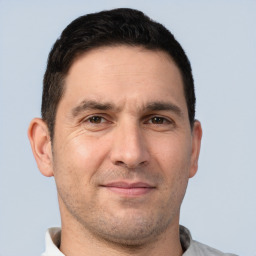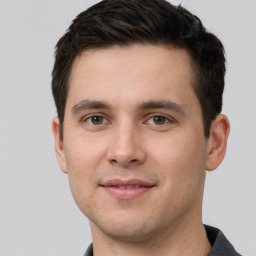This assessment will cover the following questions:
- Provide the principles of Henderson's theory as holistic approach to provide quality care to patient.
- Determines the fourteen components of theory which are applicable to improve patient's health and ensure quick recovery.
- State the Significance of Henderson's theory in nursing practices.
INTRODUCTION
Virginia Avenel Henderson is best known for a definition of nursing. Henderson was an efficient American nurse, a proficient researcher. Virginia Henderson theory majorly stresses the priority of the patient and their self-determination so the patient will continue a healthy and well after being released from the medical or healthcare setting. Henderson defined the nurse's major role as secondary health care providers. In addition, the nurses do the patient care effectively to aid the patient with ailments (Agudelo-Cifuentes and et. al., 2022). The supplementary role and responsibilities entails assisting the patients chiefly, and complementary responsibilities encompasses the engagement with the patient to do something to treat and aid the impairment of the patients. The major role of nurses aids in patient to going to their individuality. Henderson was efficiently able to give the 14 varied postulates or components that is based on personal requirements and necessities. The report entails the learner's critical thinking skills in discussing the importance and significances of the Virginia Henderson's theory in the nursing practices. The report also critically discusses the application of Henderson's theory in the management of a 68-year old patient who is struggling with stroke in the institution (Baltazar, 2022).
MAIN BODY
Virginia Henderson theory
Henderson magnificently states that each individual has their significance and basic needs and they require needful assistances to accomplish the health. They also right to independence in choices and a peaceful death too. Virginia Henderson is a major development in the nursing practices and need theory to define the unique focus of nursing practice to aid with effective patient care. The theory mainly focusses on the significance of inclining the patient's secularism to foster their progress in the hospital. Henderson's theory effectively emphasises the basic human inevitably requirements and how nurses can efficiently be assisting in meeting the basic and fundamental requirements. The application of Henderson nursing theories into clinical practices varies from different context to context of patient care process (Cardoso and et. al., 2019). The theory of nursing aids and emphasises the precedence patient care self-detection so that the patient can efficiently continue living their normal and doing well in their individual life after being released from the hospital.
Critically discuss the application of Henderson's theory in managing a 68-year-old patient with stroke in your institution. You are required to use the 14 Components of the Need Theory.
In references to Virginia Henderson's theory, it is traced from the principles and practices associated with nursing is a lordly and noble theory of nursing practices which majorly focusses on the nursing care and their related activities of daily living (ADL) efficiently. This nursing theory mainly is applied within the health care's setting since, meeting the patient requirements in the region of respiration, nutrition and the elimination of body toxic elements via body mechanics (Fernandes and et. al., 2019). In addition, the patient needs must also meet the needs of efficient rest and sleep, keeping them clean and well-groomed so that they keep with the days, and controlling the health care and patient care atmosphere, effective communication, and other human kinships, as these precocious in nursing aid and efficient care services.
Henderson is known as the very first lady of nursing, and theory globally is commendatory to nursing. This efficiently defines the unique function that a nurse holds as their function is to assist the individual with efficient patient care. This theory entails the performance of the nurses of those activities which contributes to health and recovery. The nursing process is a nucleus constituent of the nursing practice which majorly entails the evaluation. Effective diagnosis, planning of the nursing care, implementation of strategies, and evaluation of patient care in the health care setting (Garvin, 2022). The very first step to nursing process is the examination phase which majorly entails collection of data and critical thinking in the patient care process.
By using the Henderson's Nursing theory, the nurse majorly focusses on a 68-year-old patient individualised requirements. In the demonstration process of stroke patient, the nurse can efficiently assist the patient with physical and occupational therapies to aid the man with effective patient care. The nurse can efficiently oversee that prevention and curative measures are effectively implemented to prevent the injuries associated with the stroke. Henderson emphasised that the patient's liberty and their independences entails a significant role after their medical admission to hospitals (Gligor and DOMNARI, 2020).
According to the basic requirements entailed with human being, the theory is generally categorised nursing practices into 14 components of the nursing need theory. As a result, the patient could efficiently keep up with the process of evolving independence abilities when the patient is back to home. This basically describes the nurses or the other health care practitioner to who majorly assists the patient and effectively delivers patient care. In addition, the component also describes the nurse's practices and what they can effectively do for the patients and how they can offer the patient care. Also, what and they can work with the patients to deliver them develop and evolve their personal progress that could split as recovery and health.
Do you want dissertation help? Get our expert's help!
The very first nine components are associated to physiological requirements of the need theory in the case of 68-year old patient.
- Here, the 68-year old patient with stroke can efficiently assist the patient with letting the man breathe normally and eat and drink adequately which is the very first component of need theory for the stroke patient. Water aids in boosting up the immunity by keeping the pressure on the body forces the heart to blood motility, and also inclines the heart's fitness over the time Karlsson and Pennbrant, 2020). Water keeps the body hydrated throughout the day so that the patient feels comfortable and fresh.
- The second component entails eliminating body wastes effectively. Elimination of wastes from the body declines the levels of fatigues and helps the body muscles to become healthier and stronger in course of time. With this component of need theory, metabolic wastes are also replaced with oxygen and nutrients which will ultimately aid the patient in blood flow effectively. This further aid in the maintenances of the healthy muscles and body boosting.
- The third components entails movement and maintaining body postures to aid the flexibility and elasticity of the body. The nurses efficiently can aid the patient with aiming to maintain the body posture of the patient by trying to promote the optimal improvement by inflecting muscle tones (Kula and et. al., 2022). Also, the body postures will majorly aid in providing appropriate sensory messages and associated information to the old man. Stroke can also cause paralysis to one side of the body to the patient in the 68-year old patient, by making the condition difficult for the patient to move in bed effectively. Regular alterations of positions will aid the patient care and the patient to effectively minimise the patient's jeopardy of skin dislocation, contractures and other associated chest complications effectively.
- The fourth component comprises the efficient sleep and rest, the nurse can assist the patient with effective sleep and rest schedules s so that the body relaxes and rests after the daily courses to avoid the future strokes. Quality sleep and rest has many efficient benefits that will majorly impact the 68-year old patient with stroke survivors. Getting a good sleep is vital in supporting the neuroplasticity which is the brain's major ability put and restructure, and also creates a new neural relation in the healthy and effective pars of the brain. This will also allow the 68-year old man to re-learn the movements and other associated body functionalities (Mudd and et. al., 2020). Are you looking for assignment help? Get our expert's help!
- The fifth component tells about the selection of appropriate and suitable clothes-dress and undressing activity. The health care provider can majorly aid the patient with healthy clothing patterns so that patient is comfortable throughout the day and does the course effectively. The health care provider can choose the loose-fitting dresses and silky fabrics for the 68-year old patient so that the clothes easily slips off from the body while undressing and the patient feels comfortable with the clothes. The clothes must entail zips and buttons to avoid any difficulties while undressing.
- The sixth component comprises maintaining the body temperature within the normal range by adjusting the clothing and modifying the patient's environment. With the 68-year old patient, it is vital for the health care provider to maintain a stable body temperature within the normal ranges which will effectively assists in optimising metabolic processes of the body and bodily operations and functions. So it is vital for the patient to maintain the normal range of body temperature to avoid any future strokes (Ribeiro and et. al., 2018).
- The seventh components show indication for the body to be kept clean and well-groomed and defend the integument. Poor hygiene can bring forth discomfort, skin associated complaints and other infections which can lower the self-esteem. Thus it is vital that the patient is assisted with daily bathing and maintaining their hygienes by giving them daily shower. In addition, the bathing removes body dirt, nurses can effectively assist the 68-year old patient with bathing. Keeping the skin dry, clean and soft can be effectively utilised to relieve the localised pressure over the skin (Sandnes and Uhrenfeldt, 2022). Massaging can be effective in the process of stroke recovery. Bathing and grooming adaptation in the case of 68-year old majorly aids in assisting the stroke sufferers by letting the patient being independent.
- The eighth component entails avoiding the dangers encompassed within the environment and avoiding the other injuries. In case of the 68-year old patient, the patient is already old, and suffered stroke, then it is vital for the care providers to effectively avoid the dangers that may risk the patient health. Indoor falls with the 68-year old patient can be hazardous as the man can trip and fall eventually anytime due to falls. Entailing loose carpets and poor lighting can majorly impact the patient eventual fall. The health care provider can majorly keep the paths clear to the bedroom, bathroom and kitchen, so that they can walk freely to their paths (Sekrecka, 2019). Removing of loose carpets will majorly impact the falls of the stroke patient as they are vulnerable and it is vital to secure to the ground to evolve the traction.
- With the ninth component, the 68-year old patient can be effectively provided with communication and expression of emotions, needs, associated fears and opinions with the disease so that the patient heals and recovers fast. It is vital to encourage effective communication and let them make an interactive conversation so that they express their feelings. The 68-year old patient can be assisted with encouraged communication betwixt their loved ones so that the patient interacts effectively. It is vital that the health care provider tries to reflect their feelings and thoughts so that the patient expresses their feelings, fears, needs and emotions (Sharaf and et. al., 2022). This will engage the both in efficient communication and aid the process of treatment and recovery. This component will aid the 68-year old patient to participate in activities that require effective and required communication.Want essay help .Talk to our experts now!
- The tenth component entails the patient care by worshipping according to the patient's faith. Strong religious beliefs are effective in protecting the stroke patients from emotional suffering and associated other distresses. This perhaps aids in healthy recovery of the patient. The strong emotions with beliefs and religious faiths impacts and influences the abilities to cope up with post stroke events. In case of the 68-year old patient, stronger religious beliefs and faiths acts as a possible protective factor against the emotional distresses.
- The eleventh component encompasses the working in such a way that there is feeling of accomplishment in the health recovery process. The patient should be assisted with loads of motivation so that the patient is influenced and this process will majorly aid on the potencies of recovery processes. The occupational therapy is then flourished with the patient care in the case of 68-year old patient who has suffered from stroke. The health care provider can make goals and set target to id in motivating the stroke patient. Positivity with the motivation entailed will help the patient to focus more on the recovery.
- The twelfth component considers the play and participation in varied forms of artefact. In case of a 68-year old patient, the health care providers can efficiently entail the leisure activities such as games and other plays to improve the stress and stroke levels in patient. Low mood and anxiety can be effective in the process of patient recovery and so the patient must be provided with enjoyable time communicating with others and involving themselves into physical activities. Body exercises helps in lowering the blood pressure within the body and so the 68-year old patient must be assisted to effective and regular body exercises (Tuegeh and Rantepadang, 2020).
- The thirteenth component of need theory encompasses the patient care by letting the patient learn, detect, and satisfy the curiosity which efficiently leads to normal evolution of the health and usage of available health care facilities. The patient here must be assisted with extra care and attention to lead a normal development of the patient post stroke events.
- The fourteenth component of need theory tells about the patient's self-actualization. The patient with stroke are very poorly actualised. This self-actualization levels do not effectively improve the health during rehabilitation and so the health care providers should be assisted with self-actualization process to let the patient accomplish their full potential involving the creative activities and plays to motivate and boost their attention towards healthy leading to quality recovery and lifestyles (Tylka, 2022). The 68-year old patient should be imposed to self-actualization so that the patient recovers effectively and lets the process of healing to be easy-going.
With application of these components on the 68-year old patient, the stroke recovery can be easy and the patient can then lead a healthy and easy-going lifestyles.
Read more:
R/616/2017 Marketing Essentials for Travel and Tourism - TUI
CONCLUSION
From the above report, it is being conferred that Virginia Henderson theory emphasises the precedence of the enduring patient and their self-government so that the patient can easy-go with a healthy lifestyle and keeps to their healthy health after being discharged from the medical or healthcare sector. Henderson outlined the nurse's leading role as subsidiary health care providers. In addition, the health care provider does the persevering patient care efficaciously to assist the patient with ailments and other distresses. In case of a 68-year old patient, the patient is assisted with the 14 components of the need Henderson's need theory to bring forth health and recovery post-stroke events. The components entails assistance with the help of health care professionals and other associated health care providers by making them breathe normally, eating and drinking adequately. In addition, the patient is also assisted with efficiently eliminating the body wastes, maintaining their body postures. Sleeping and giving rest to body appropriately and maintaining the patient's hygiene, their dressing routines, communicating with them to aid the stress and anxiety.
REFERENCES
- Agudelo-Cifuentes, M.C., Berbesi-Fernández, D.Y. and Salazar-Maya, Ã.M., 2022. Preparation of a Scale for Assessing Nursing Care Needs in Dependent People. Aquichan, 22(3).
- Baltazar, S., 2022. Effective Therapies and Nursing Approaches: Improving Cognition in Older Adult Stroke Patients.
- Cardoso, M.F.P.T., Ribeiro, O.M.P.L. and Martins, M.M.F.P.D.S., 2019. Death and dying: contributions to a practice based on nursing theoretical frameworks. Revista gaucha de enfermagem, 40.
- Fernandes, B.K.C., Clares, J.W.B., Borges, C.L., Nóbrega, M.M.L.D. and Freitas, M.C.D., 2019. Nursing diagnoses for institutionalized elderly people based on Henderson's theory. Revista da Escola de Enfermagem da USP, 53.
- Garvin, D.C., 2022. Quality Improvement in Positive Airway Pressure Adherence Through Practice Guideline Monitoring Submitted (Doctoral dissertation, Grand Canyon University).
- Gligor, L. and DOMNARI, C.D., 2020. Patient care approach using nursing theories-comparative analysis of Orem's Self-Care Deficit Theory and Henderson's Model.
- Karlsson, M. and Pennbrant, S., 2020. Ideas of caring in nursing practice. Nursing Philosophy, 21(4), p. e12325.
- Kula, A., 2019. Funkcjonowanie pacjenta po przebytym udarze niedokrwiennym mózgu-studium przypadku.
- Mainz, H., Odgaard, L. and Kristensen, P.K., 2022. Nursing representatives in clinical quality databases and the presence of nursingâ€sensitive indicators of fundamental nursing care. Journal of Advanced Nursing.
- Mudd, A., Feo, R., Conroy, T. and Kitson, A., 2020. Where and how does fundamental care fit within seminal nursing theories: A narrative review and synthesis of key nursing concepts. Journal of clinical nursing, 29(19-20), pp.3652-3666.
- Nursiswati, N., Halfens, R.J. and Lohrmann, C., 2020. Psychometric properties of the Care Dependency Scale in stroke survivors in Indonesian hospitals. International journal of nursing sciences, 7(3), pp.330-336.
- Ribeiro, O.M., Martins, M.M., Tronchin, D.M. and Forte, E.C., 2018. The perspective of portuguese nurses on nursing metaparadigmatic concepts. Texto Contexto Enferm, 27(2), p.e3970016.
- Sandnes, L. and Uhrenfeldt, L., 2022. Caring touch in intensive care nursing: a qualitative study. International Journal of Qualitative Studies on Health and Well-being, 17(1), p.2092964.
- Sekrecka, E., 2019. Opieka nad 70-letnią pacjentką po krwotocznym udarze mózgu.
- Sharaf, K.H., Mohamed, R.A. and Fadlalmola, H.A., 2022. Application of Henderson Theory on Nursing Care for Bullous Pemphigus Patients at Khartoum Dermatology Hospital, Sudan. International Journal of Nursing Education, 14(1).
- Tuegeh, M. and Rantepadang, A., 2020. Fulfillment of Personal Hygiene with the Level of Satisfication of Immobilization Patient (No. 3618). EasyChair.
- Tylka, S.A., 2022. Assessment for Delirium in the Postoperative Patient to Impact Falls Submitted (Doctoral dissertation, Grand Canyon University).












